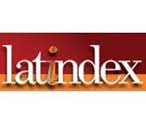Bootstrap-based inference for grouped data
Inferencia para datos agrupados vía bootstrap
DOI:
https://doi.org/10.15446/rev.fac.cienc.v4n2.54254Palabras clave:
Bootstrap, estimation, grouped Data (en)Bootstrap, datos agrupados, estimación (es)
Descargas
Los datos agrupados se reeren a variables continuas que se dividen en intervalos no necesariamente de la misma longitud para facilitar su interpretación. Contrario a lo que ocurre en datos no agrupados, la estimación de simples estadísticos de resumen como la media o la moda, o más complejos como un percentil o el coeciente de variación, es una tarea difícil en datos agrupados. Cuando no se conoce la distribución de probabilidad que genera los datos, la inferencia en datos no agrupados se realiza utilizando métodos paramétricos o no paramétricos de remuestreo. Sin embargo, no existen métodos equivalentes para datos agrupados. En este documento se propone, describe e ilustra un método basado en bootstrap para estimar los parámetros de una distribución desconocida a partir de datos agrupados.
Referencias
Carpenter, J. & Bithell, J. (2000), Bootstrap Confidence Intervals: When, Which, What? A Practical Guide for Medical Statisticians, Statistics in Medicine, 19(9), 1141-1164.
Davison, A. C.; Hinkley, D. V. & Young, G. A. (2003), Recent Developments in Bootstrap Methodology, Statistical Science, 18(2), 141-157.
DiCiccio, T. J. & Efron, B. (1996), Bootstrap Confidence Intervals, Statistical Science, 11 (3), 189-228.
Efron, B. (1979), Bootstrap Methods: Another Look at the Jackknife, The Annals of Statistics, 7 (1), 1-27.
Efron, B. (1987), Better Bootstrap Confidence Intervals, Journal of the American Statistical Association, 82 (397), 171-185.
Efron, B. (2003), Second Thoughts on the Bootstrap, Statistical Science, 18( 2), 135-140.
Hajargasht, G.; Gri_ths, W. E.; Brice, J. & Rao, D. P. & Chotikapanich, D. (2012), Inference for income distributions using grouped data, Journal of Business & Economic Statistics, 30( 4), 563-575.
Harrell, F. E. & Davis, C. E. (1982), A New Distribution-Free Quantile Estimator, Biometrika, 69( 3), 635-640.
Heitjan, D. F. (1989), Inference from grouped continuous data: A review, Statistical Science, 4(2), 164-179.
Hinkley, D. V. (1988), Bootstrap Methods, Journal of the Royal Statistical Society. Series B (Methodological), 50(3), 321-337.
Kanazawa, Y. (1992), An Optimal Variable Cell Histogram Based on the Sample Spacings, The Annals of Statistics, 20 (1), 291-304.
Letson, D. & McCullogh, B. D. (1998), Better Confidence Intervals: The Double Bootstrap with No Pivot, American Journal of Agricultural Economics, 80(3), 552-559.
On, C. W. (2002), Mean, Variance and Standard Deviation for Grouped Data, http://www.angelfire.com/blues/michaelyang/ive/dms/chapter_05/5_6_StaDev.html. Accessed: 2015-11-18.
Pierce, R. (2014), Mean, Median and Mode from Grouped Frequencies, https://www.mathsisfun.com/data/frequency-grouped-mean-median-mode.html. Accessed: 2015-11-18.
R Core Team (2015), R: A Language and Environment for Statistical Computing, R Foundation for Statistical Computing, Vienna, Austria. URL: http://www.R-project.org/.
Scott, D. W. (1979), On Optimal and Data-Based Histograms, Biometrika, 66 (3), 605-610.
Scott, D. W. & Scott, W. R. (2008), Smoothed Histograms for Frequency Data on Irregular Intervals, The American Statistician, 62(3), 256-261.
Taylor, C. C. (1987), Akaike's Information Criterion and the Histogram, Biometrika, 74(3), 636-639.
Vélez, J. I. & Correa, J. C. (2014), Should we think of a different Median estimator?, Revista Comunicaciones en Estadística, 7( 2), 1-8.
Wand, M. P. (1997), Data-based Choice of Histogram Bin Width, The American Statistician, 51(1), 59-64.
Zhan, Y. & Wellner, J. A. (1995), Double censoring: characterization and computation of the nonparametric maximum likelihood estimator, Technical report.
Cómo citar
APA
ACM
ACS
ABNT
Chicago
Harvard
IEEE
MLA
Turabian
Vancouver
Descargar cita
CrossRef Cited-by
1. Zahra AghahosseinaliShirazi, João Pedro A. R. da Silva, Camila P. E. de Souza. (2024). Parameter estimation for grouped data using EM and MCEM algorithms. Communications in Statistics - Simulation and Computation, 53(8), p.3616. https://doi.org/10.1080/03610918.2022.2108843.
Dimensions
PlumX
Visitas a la página del resumen del artículo
Descargas
Licencia
Los autores o titulares del derecho de autor de cada artículo confieren a la Revista de la Facultad de Ciencias de la Universidad Nacional de Colombia una autorización no exclusiva, limitada y gratuita sobre el artículo que una vez evaluado y aprobado se envía para su posterior publicación ajustándose a las siguientes características:
1. Se remite la versión corregida de acuerdo con las sugerencias de los evaluadores y se aclara que el artículo mencionado se trata de un documento inédito sobre el que se tienen los derechos que se autorizan y se asume total responsabilidad por el contenido de su obra ante la Revista de la Facultad de Ciencias, la Universidad Nacional de Colombia y ante terceros.
2. La autorización conferida a la revista estará vigente a partir de la fecha en que se incluye en el volumen y número respectivo de la Revista de la Facultad de Ciencias en el Sistema Open Journal Systems y en la página principal de la revista (https://revistas.unal.edu.co/index.php/rfc/index), así como en las diferentes bases e índices de datos en que se encuentra indexada la publicación.
3. Los autores autorizan a la Revista de la Facultad de Ciencias de la Universidad Nacional de Colombia para publicar el documento en el formato en que sea requerido (impreso, digital, electrónico o cualquier otro conocido o por conocer) y autorizan a la Revista de la Facultad de Ciencias para incluir la obra en los índices y buscadores que estimen necesarios para promover su difusión.
4. Los autores aceptan que la autorización se hace a título gratuito, por lo tanto renuncian a recibir emolumento alguno por la publicación, distribución, comunicación pública y cualquier otro uso que se haga en los términos de la presente autorización.
5. Todos los contenidos de la Revista de la Facultad de Ciencias, están publicados bajo la Licencia Creative Commons Atribución – No comercial – Sin Derivar 4.0.
MODELO DE CARTA DE PRESENTACIÓN y CESIÓN DE DERECHOS DE AUTOR






















